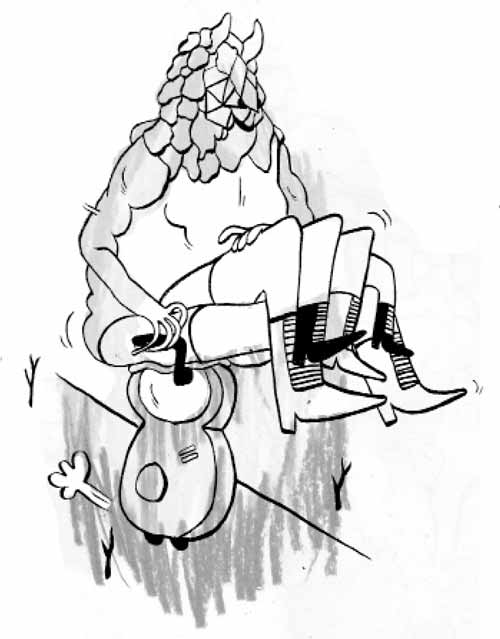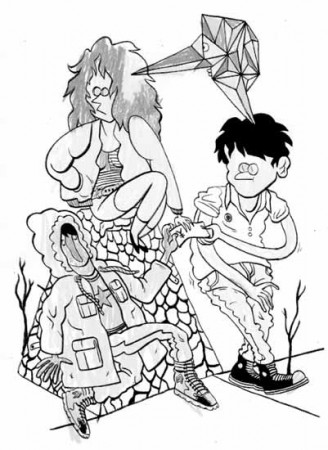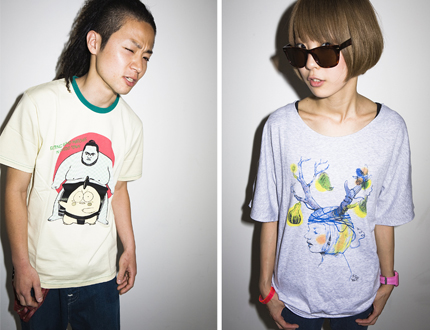By Jenny Uechi
Personal Mobility
Segway and Honda go head to head eight years after Segway came out with an ingeniously-designed yet horrifically-geeky personal transporter. For those of you who haven’t seen it in action, you only need to watch Weird Al Yankovich’s White and Nerdy video. Now, the personal mobility trend has caught fire in Japan.
Honda Motors has now come up with their own technologically superior yet equally “dasai” (uncool) device, vehicle—the U3-X. At just 10 kilos (22lbs), it’s small and portable, and has a clever design that features one large wheel composed of many smaller wheels. The larger wheel is used for forward and backward movement, while the smaller wheels kick in when you need side-to side movements. Movement can be controlled by just by shifting your body weight, making this device a godsend for those with bad knees or a limp. At just 6km per hour, it won’t save you much time compared to walking, but it will save a lot of energy for fat-deprived bodies with none to burn. Honda’s new U3-X seems to be a few steps ahead of Toyota’s “winglet,” a personal mobility vehicle that was marketed last year as a “Segway killer”, even though many in the US wondered if the Segway was big enough to merit killing at the hands of Japan’s best auto companies.
Why has personal mobility become a hit in Japan? Many say that it’s because of demographics: in 2009, a government survey found that 1 in 4 women (and 1 in 5 men) were aged 65 and over. With studies suggesting that 1 out of 3 is not so far off the horizon, Honda and Toyota have realized that fast, slick cars and stylish motorcycles—both symbols of the youth market—will soon have no one to buy them. Casting an eye to their grandparents, car companies have decided that safe, slow personal, one-person transportation is where the money is to be had.
Recessionista fashion : Of “Geeks and Yankees”
And speaking of youth, the consensus seems to be that haute couture is no longer in style among Japan’s under-30 crowd. Walk down the streets of Tokyo today, and you’ll notice three general types of youth, with small subgroups scattered between: first is the “Yankee” (delinquent/gang), with their trademark bleached blond hair, orange-tan skin, black clothes and colored blue/green/amber contact lenses. Second is the “Simple” type, with neutral, shapeless shirts, low-key brownish hair and relaxed footwear of no particular brand. Third is the “Geek”, who looks a lot like the “Simple” except with colorful high-tech sneakers, a plaid shirt, but with the glaring lack of hair dye or notable hairstyle. These three groups are the core of “Recessionista” fashion, which has sprung up with Japan’s struggling economy. These youth spend less on clothes and take little interest in London Fashion Week, but without a doubt, are the driving force behind Japan’s apparel industry today.
The Yankee
 Rather than posh Burberry coats, young fashionable men are opting for “Suka-jan” jackets—a must-have “yankee” item that’s short for Yokosuka (a region known for biker gangs) and Jacket/Jumper. Looking like a college football jacket with elaborately embroidered Japanese calligraphy and traditional motifs (tigers, cherry blossoms, dragons), the “suka-jan” exudes bad-ass cool and defies Euro-chic that guys once aspired to; that is, back when people had money to spare. Girls of the yankee variety also wear the suka-jan, paired with ultra-short miniskirts or sweatpants, along with colorful sneakers.
Rather than posh Burberry coats, young fashionable men are opting for “Suka-jan” jackets—a must-have “yankee” item that’s short for Yokosuka (a region known for biker gangs) and Jacket/Jumper. Looking like a college football jacket with elaborately embroidered Japanese calligraphy and traditional motifs (tigers, cherry blossoms, dragons), the “suka-jan” exudes bad-ass cool and defies Euro-chic that guys once aspired to; that is, back when people had money to spare. Girls of the yankee variety also wear the suka-jan, paired with ultra-short miniskirts or sweatpants, along with colorful sneakers.
While many still frown upon yankee fashion, their lifestyle has surprising support among scholars, who say that yankees—who often marry early, have kids, and settle for low-wage but honest jobs—are far healthier than the suit-clad elite who remain single into their thirties while working 60 hour-weeks in high-stress jobs.
The Simple
They eat organic, avoid flashy logos and buy everything from Uniqlo and MUJI. Highlighted in this year’s bestseller “No Logo Japan”, the “Simple” Japanese youth are seen as a backlash against the “Chanelers” (Chanel-wearers) and “Gucchers” (Gucci fanatics) of yesterday; preferring the down-to-earth aesthetic over stylish looks off the catwalk. Just because they’re not wearing 30,000 yen jeans, however, doesn’t mean they’re not equally picky about their clothing. The “simple” crowd meticulously checks the origin of their clothing (the way a Chaneler checks for the “Made in France” label) to make sure that their clothes are eco-friendly and sweatshop-free. These youth value the gaping blank space on their jeans in the same way that Levis’ fans value the red tag on their denim.
The Geek
 The kings of recessionista fashion, however, are the “geeks,” who have been on the cutting edge of this trend for years, with their tendency to spend the minimum possible on clothes, while splurging on their hobbies. While there’s no set trend for this group, they’re recognizable for their functional lightweight backpacks, all-purpose hiking jackets (gore-tex and hooded, allowing for long lineups in the rain), and sneakers/running shoes that allow long-distance walking 365 days a year. Geek fashion items can be worn for years without ever going out of style, because they’re never really in style to begin with.
The kings of recessionista fashion, however, are the “geeks,” who have been on the cutting edge of this trend for years, with their tendency to spend the minimum possible on clothes, while splurging on their hobbies. While there’s no set trend for this group, they’re recognizable for their functional lightweight backpacks, all-purpose hiking jackets (gore-tex and hooded, allowing for long lineups in the rain), and sneakers/running shoes that allow long-distance walking 365 days a year. Geek fashion items can be worn for years without ever going out of style, because they’re never really in style to begin with.
See more Japanese street fashion at The Japanese Street Report (japanesestreetreport.blogspot.com)



3 comments
Just one question: how to add your blog into my rrs reader, thanks so much.
You can subscribe to our article rss feed at http://ricepapermagazine.ca/feed
[…] to have Jenny Uechi as a guest blogger. Jenny is the infamous Jenny of long-time Ricepaper column JennyPop. She recently escaped her capsule apartment in Tokyo and is now a Vancouver-based writer and […]